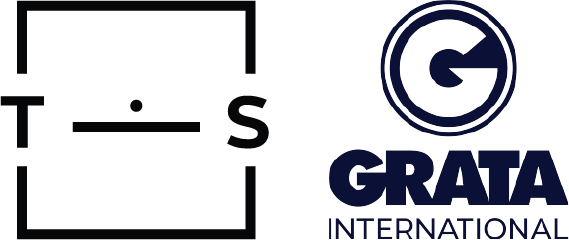In 2018 the Republic of Serbia adopted the Law on the Amendment of the Corporate Income Tax Law („Official Gazette of RS“, no. 95/2018), thereby introducing tax incentives for taxpayers in the field of research and development, that is incentives in the form of increased deductions for research and development expenses, which includes the recognition of expenses directly connected to research and development (R&D) in the tax balance in doble the amount, and incentives in the form of exemptions of qualified income from the corporate income tax base (IP BOX). The adoption of the Law on the Amendment of the Corporate Income Tax Law („Official Gazette of RS“, no. 95/2018) also provided the tax incentive exemption of the payment obligation for 70% of the calculated and withheld tax from the income of persons directly engaged in research and development activities (R&D).
Tax incentives in the form of increased withholding for research and development (R&D) costs are regulated in more detail in the Rulebook on the Conditions and Means of Exercising the Right to the Recognition of Expenses Directly Linked to Research and Development in the Tax Balance in the Double the Amounts (“Official Gazette of RS, number 50/19). This tax incentive can be used by all companies dealing with research and development, while the rulebook defines those companies that are unable to use the said incentive (e.g. the oil and gas industry). A company conducting research and development can express their R&D costs in double the amounts in the tax balance, which simplifies business operation for the company and their implementation of R&D projects. Companies are entitled to use the incentive if they are implementing their R&D activities in the Republic of Serbia territory, i.e., if 90% of those employed on R&D projects perform their activities in the Republic of Serbia. It is also necessary for the research and development to be performed for own benefit, and if the product is commercialized it should be in the ownership of the company. For this incentive to be realized, it is not necessary for the research and development project to be a success, the intent on implementing the project is what’s important, and that there are actions that have been taken. The expenses that qualify are only those that are directly related to research and development (salary costs for employees – and those performing the monitoring, the costs of material procurement, non-material asset costs…), while the R&D Rulebook prescribes which are the expenses that cannot be considered as R&D expenses – unqualified costs. It is possible to use incentive only for certain costs as it is not obligatory to use incentive for all expenses provided in the R&D Rulebook.
The next tax incentive in the form of deduction concerning the corporate income tax consists of the taxpayers right, i.e., startup’s right to exempt “qualified income” from the income tax base (taxable income) in the amount of 80% of such generated income (IP BOX). This incentive is regulated in closer detail by the Rulebook on the Conditions and Means of Exempting Qualified Income from the Corporate Income Tax Base (“Official Gazette of RS”, number 50/19). The condition for the use of this incentive is that the taxpayer is the owner of copyrights or related rights and that he or she is generating income on the basis of granting the use of copyrighted work or a related rights work. This concerns a copyrighted work created as a result of conducted research and development (R&D) on the Republic of Serbia territory, and subsequently granted for use by other persons for a fee. It is necessary for the copyrighted work to be deposited with the Intellectual Property Office and for the taxpayer to take care of the submitted application. Qualified income is established by firstly deducting the qualified expenses from the total income generated on the basis of fees for the use of deposited copyrighted work, and then the result is multiplied by the percentage of qualified expenses participation in the total costs generated in connection with that copyrighted work. Qualified expenses are those expenses in connection with research and development (R&D) activities and which as a consequence have had the creation of said deposited copyrighted work.
Tax exemption for employees engaged in R&D activities is reflected in the right of the employer – company to be exempted from the payment of 70% of income tax and 100 % of pension and disability insurance for persons who are employed on the direct execution of research and development (R&D), proportionate to the time that such persons have spent on R&D activities in relation to full-time hours. This tax exemption is regulated in more detail by the Rulebook on the Conditions and Means of Exercising the Right to Exemptions Based on Research and Development Employee Earnings (“Official Gazette of RS”, number 48/22). The condition for using this incentive is that the company was founded in Serbia and that it has conducted R&D on the Serbian territory (at least 90% of all those employed on the research and development are performing their R&D project implementation activities on Serbian territory). Also, it can only be used by business entities, and not by entrepreneurs or branches of foreign legal entities. This incentive can only be used in the event that research and development is performed for own account and if the company is becoming the owner of intellectual property that could be generated as a result. The exemption concerns only those employees who are directly engaged on research and development activities and have a work contract. When using the said incentive, it is most important to keep record of each employee engaged on the R&D project which qualifies for the use of tax exemption. The record , among other things, should include: information on the employee’s working hours, his or her full-time hours, the working hours spent on R&D projects for that months, time spent on vacation in that month, information regarding earnings, earning allowances and other incomes of that person, etc.
What is common for all the abovementioned tax incentives is the obligation of the taxpayer, which fulfils the requirements and intends on using the tax deductions, to also have the documentation necessary for using the incentives. The documentation needed for all three types of incentives is the description (specification) of the research and development project, while the other documentation may differ depending on the type of deduction. Hence, for the recognition of expenses directly related to research and development in the tax balance in double the amount, in addition to the description of the project one should prepare the documentation concerning the expenses themselves, the project budget and the like, while for the IP BOX – the exemption of “qualified income” from the income tax base, the documentation concerning the deposited copyrighted work, records of income from the copyrighted work, licence agreements, etc., is also needed. Speaking of the exemptions from 70% tax and 100% contributions for pension and disability insurance for R&D employee salaries, as has already been stated, the records of the working hours of R&D employees are what’s most important, as well as other documentation in the form of reports on those employed on said activities, the report on the project results, etc. Certain documentation is submitted to the tax administration office along with the tax return and tax balance, while a portion of the documentation is retained, and the taxpayer is obligated to have it in their possession in the event of tax audit.
In any case, the specified incentives carry with them certain challenges for the company, first and foremost greater employee education, greater communication between departments dealing with research and development, keeping more complicated records and more complex calculations. Still, all companies dealing with research and development and fulfilling the conditions for the use of tax deductions can achieve significant tax savings through tax incentives, and it is recommended that they use the tax deductions and thereby reduce their taxable income and tax obligation, and consequently the costs of their business operation.




